First off, for all you Star Trek fans out there, I know "Final Frontier" sounds better, but the title should really be "ABM's Final Hurdle." Why? Because monitoring campaign effectiveness is often the most neglected step in an account-based marketing strategy, and it may be the only thing stopping a good ABM strategy from becoming truly great.
Account-based marketing is not a one and done strategy. Your target audience, goals, and marketing landscape as a whole are all constantly changing, and if your strategy doesn't recognize and adapt to these changes, it will ultimately fall short no matter how much work you put into it upfront. Once your ABM campaign is up and running, it’s important to measure its success and see what's working and which areas you can improve.
In this article, we will discuss various marketing attribution models so you can decide which one makes the most sense for your unique business situation. This will allow you to more accurately monitor the effectiveness of your ABM campaigns and determine where to focus your marketing budget.
When it comes to marketing attribution there are two major types of modeling that marketers use to measure campaign effectiveness: single-touch and multi-touch.
Single-Touch Attribution models assign 100% of the attribution credit to one single touchpoint (an ad, email, direct mailer, etc.). These models are relatively easy to implement but lack the granularity needed to capture the complexity of the B2B buying and decision process.
- First Touch Attribution gives 100% of the credit to the first touch that created the lead.
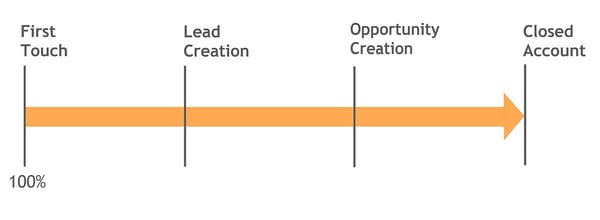
- Last Touch Attribution gives 100% to the last touchpoint a lead engaged with in the buying process.
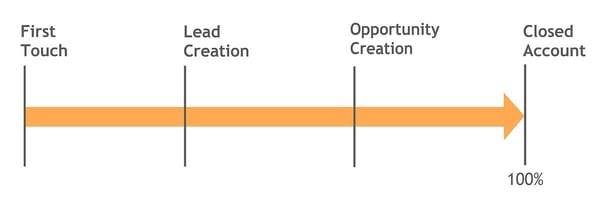
Multi-Touch Attribution Models, on the other hand, are a bit more complicated but offer a more comprehensive view of the sales and marketing process by taking into account things like website engagement, content downloads, ad campaigns, email campaign engagement, form fills, webinar attendance, inbound phone calls, trade shows, and a variety of other elements in the B2B buying cycle.
- Linear Models give equal weight to all touchpoints throughout the customer buying process (ex: If you have four touchpoints from first contact to close, they would each receive 25% credit). Linear models are the most straightforward and probably the easiest to implement in your marketing strategy but can suffer from similar limitations to single touch methods.

- Time Decay Models give a higher percentage of the credit to touchpoints that occur closer to the closed deal. The thinking behind this method is that it was the more recent touchpoints that pushed the prospect to buy.
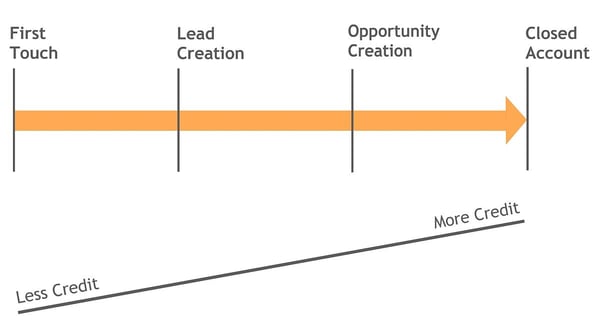
- U-Shaped Models give 40% to the first touch and 40% to the touch that converted the lead, with the remaining 20% divided up between all touchpoints between these two milestones. This model is useful for determining how effective your marketing campaigns are at generating leads but is limited in that it stops after the lead is created, leaving you in the dark about the rest of the sales cycle.
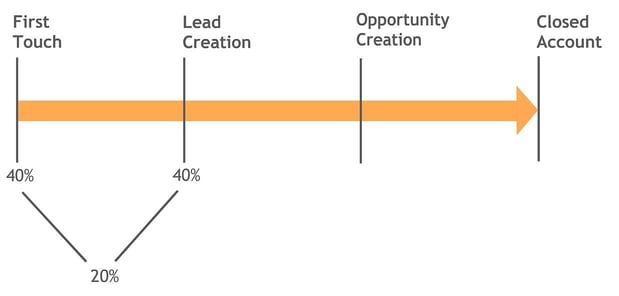
- W-Shaped Models are a more in-depth variation of a U shaped model. These models evenly split roughly 90% of the credit to the first visit, the lead-creation session, and the opportunity-creation session with the remaining 10% evenly divided among all other touchpoints (again, assuming there are any).
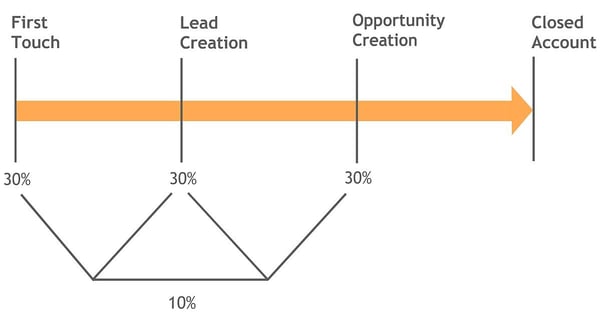
- Full-Path Models evenly distribute 22.5% of the credit between the first touch, lead creation, opportunity creation, and closed deal/follow up interactions with the remaining 10% split evenly between the other touchpoints. This is the most complex of these models because it requires input from both sales and marketing teams, but it provides the most comprehensive view of the buying process.
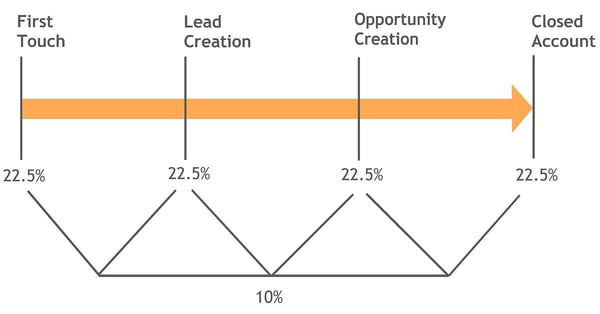
All of these models are good and they work, the key is choosing the right model to fit your business needs. You should take into account the time, money, and energy it will take to implement any of these attribution models and make sure you have the organizational resources to properly utilize them. It’s also important to go back to your Key Performance Indicators (KPIs) and understand the metrics that really matter to your team as this will be a deciding factor in choosing which method to implement.
While all this might seem like a lot of work, one thing to take solace in is that we’re living in the golden age of data. Today we have a wealth of technology that gives us unprecedented depth into market segmentation and metrics, making the process of measuring your campaign effectiveness much more manageable.
Fortunately, this information can be gathered using website visitor tracking methods, such as IP address intelligence, which identifies the exact companies visiting your site and provides company data, such as industry, revenue, employee count, and more. This allows you to ensure your marketing efforts are bringing in the accounts that really matter to your organization. The sheer volume of your website traffic, clicks on an ad, content downloads, etc. can be a good indicator that your campaigns are working, but that’s only half of the story. Meaningful marketing attribution comes from determining exactly which companies are engaging with your messages so you can make adjustments to focus on the areas that are bringing in the best leads.
If you want more information about how IP address intelligence can drastically improve your marketing attribution efforts, check out our guide to learn more!
